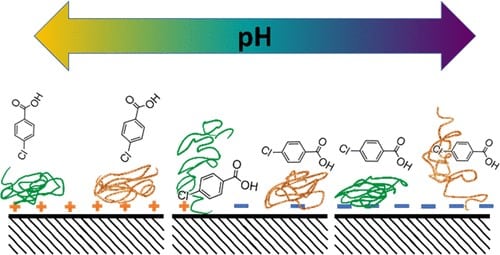Mostafa Maghsoudi, Celine Jacquin, Benoit Teychené, Geoffroy Lesage, and Samuel D. Snow
Published: 6 February 2023

Abstract
In the face of significant challenges to practical applications of photocatalysis for water treatment, recent reports revealed a potential route to overcome a problem posed by dissolved organic matter (DOM). These studies showed that inhibition of photocatalytic processes by DOM is driven largely by competition for active surface sites on TiO2 or other catalysts, and controlling the type of DOM present in solution could significantly mitigate DOM fouling. Whether or not control of solution parameters could achieve the same preventative action is not known. Here, a series of DOM isolates, including humic acid (HA) and transphilic (TPI), hydrophobic (HPO), or colloidal fractions of organic matter from a membrane bioreactor mixed liquor supernatant, were tested for inhibitory activity under a range of pH values (3, 5, 7, and 9) and ionic compositions (NaCl, CaCl2, and Al2(SO4)3 with ionic strengths (IS) ranging from 0 to 3 M). The resulting TiO2-DOM agglomerates were monitored for size and ζ-potential. Inhibitory profiles were generated using para-chlorobenzoic acid (pCBA) as probe with varying concentrations of inhibitory DOM for each solution condition to discern the extent of surface-phase quenching of radicals. Manipulation of pH clearly impacted inhibition, and the effect varied by DOM type; for example, interference occurred at all pHs for HA, at neutral or basic pHs for TPI, and only at pH 7 for HPO. Particle sizes did not correlate with inhibitory action of DOM. Increases in ionic strength induced growth of TiO2 and TiO2-DOM agglomerates, but again, particle sizes did not correlate to inhibition by DOM. The changes to IS, regardless of ion type, were not affected by the presence of TPI or HPO. Since particle stability did not correlate directly with photocatalytic activity, we suggest that surface-based quenching reactions arise from site-specific adsorption rather than generalized particle destabilization and aggregation.
… To achieve quasi-collimated irradiation, a black tube was used to isolate rays from one of several lamps within the cabinet and mitigate reflection. An intensity value of 722 μW·cm–2 was measured for the UV LED using a BLUE–Wave UVNb-25 Spectrometer (StellarNet, Inc., Tampa, FL) …





